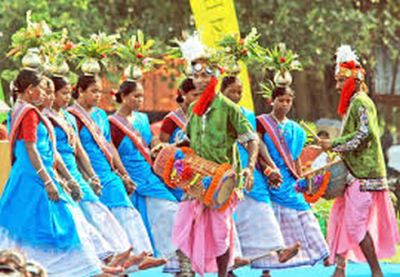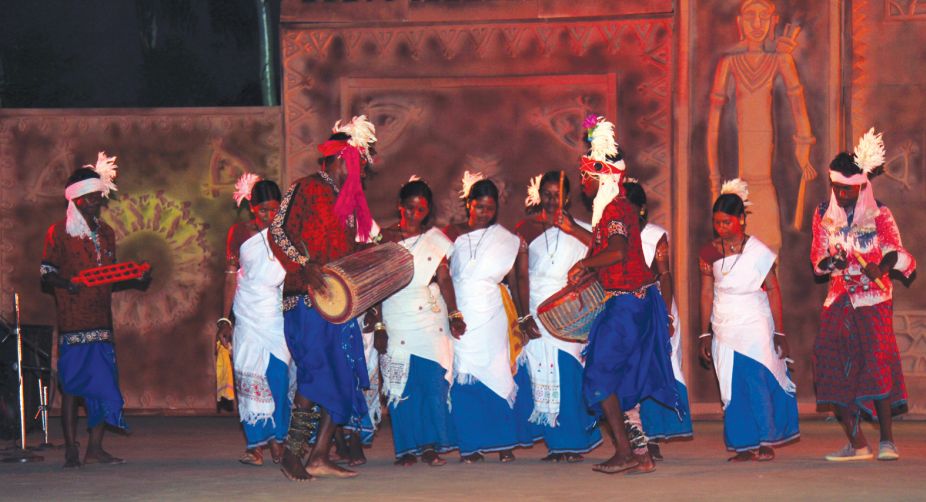Munda : Proto - Australoid Tribe
INTRODUCTION
- Mundas are a central Indian tribe recognised in Tripura as an immigrant tribe and its original homeland was Chota Nagpur.
- Mundas belong to the Proto-Australoid family.
- Mundari is their language, which is Austro-Asian in origin.
- According to the 2011 Census, their current population is 14,544 people, mostly concentrated in Kailashahar, Manu Valley Tea Estate, and other tea estates in the state.
- Mundas live in settlements that are intermingled with different tribes. They enjoy their lives while working in a tea garden with community involvement, group hunting with bow and arrows, group dancing and singing, and drinking country liquor regardless of age bar at any ceremony or celebration.
- Hindus are Mundas. They believe in their traditional gods as well. Every Munda village would have three distinct characteristics: (1) SARANA, (2) AKHRA, and (3) SASAN.
- PAHAN (Priest) also plays a crucial role in Mundas' lives. Pahan is in charge of all religious ceremonies and rituals, as well as community festivals, weddings, appeasing village deities, and funeral rites.
- Mundas' economy is so fragile that they are still living month to month. They frequently rely on Mahajan from the village. Even back then, there were many changes in their socioeconomic lives that can now be seen.
HISTORY
- The Munda tribes are one of India's oldest and most ancient tribes.
- They lived in the Sindhu valleys, which are now parts of Punjab and the north. They moved steadily from Kalibonga, Uttar Pradesh, to the current state of Jharkhand in the Indian subcontinent.
- Jharkhand has the highest population density, followed by sections of Odisha, Assam, Bengal, Andaman, and Bangladesh.
- Munda tribes are known as Hodo, which means "people." Others claim that Munda is derived from the word muhundu, which means "original people."
CULTURE
- 1/4th of the population is Christian.
- They speak Mundari language and their special dance form is called as Nupur (an anklet) dance.
- They also have their own religion called Sarna, which stress on the belief of one god.
- They believe in Supreme Being called the Singbonga (means the Sun God).
RELIGION
- Though the Munda are not among the principal keepers of Hindu traditions as followed by the Brahmans, Hinduism has an effect.
- The great deity, as protector and judge—sometimes identified with the sun, sometimes depicted as a "diluted version" of Hindu gods—should normally be distinguished from the creator, especially since the former typically destroyed.
- Numerous spirits (called bonga in Chota Nagpur) exist in all tribes, both benevolent and malignant.
- Agricultural gods and goddesses, spirits of trees, hills, forests, the village, village boundaries, ancestral spirits, other household and lineage deities, clan deities, deities associated with snakes, tigers, monkeys, and other wild animals, the ghosts of women dead in childbirth or pregnancy, the ghosts of suicides or murders, Christians are a minority in most tribes, yet they account for about half of the Kharia. There aren't many Muslims here.
OCCUPATION
- In the ancient days, they used to be woodcutters.
- They cut down the forests and sell the wood for their livelihood.
- They even opt for fishing, hunting and earth cutting.
- Then they eventually shifted to agriculture, even though most of them do not have their own land and depend on the labour work in the fields.
FOOD & CLOTHING
- These people are animal eaters for a long time. Eg: frogs, earthworms, snakes, rats, shells and snails.
- They also prefer wines like Tari and Haria on special occasions.
- These people are generally short heighted, dark complexed, curly haired and good looking.
- Munda men wear pants and shirts and women wear cotton sarees with blouse.
LANGUAGES
- The main language spoken by them is "Munda" or "Kili" , Santali and Mundari.
- The Munda language is an Indian tribal language spoken by more than nine million people in India's central and eastern regions. It is also spoken by people in Bangladesh, India's neighbouring country.
- The Munda language belongs to the Austro-Asian tribal language family.
- The Munda language is in direct opposition to the Mon-Khmer languages, which are widely spoken throughout Southeast Asia.
- The origin of the Munda language, however, is unknown. This language is claimed to be an autochthonous language of India's eastern area.
FESTIVALS
- There are many various types of festivals, each with its own purpose, such as hunting festivals, religious festivals, war festivals, and so on, but most tribal celebrations follow the seasons and the agricultural cycle.
- The Munda's biggest festivals include Sarhul, Karma, and Sohrai.
- The seasonal and agricultural cycles are followed by the community.
- Agriculture, in general, has a broader sense, although it concentrates mostly on paddy agriculture here because rice is the major food of the people.
- Munda community celebrates these festivities according to the seasons.
- It shows thankfulness to nature for providing a plentiful harvest.
Munda was one of the interesting Indian tribes to study about. India, being the second largest concentration for tribes in the world, the country will never be able to see the dawn of development due to the tribes being the under-developed. The tribes should be educated so that they can fit into the mainstream society and accepted by all.






Comments
Post a Comment